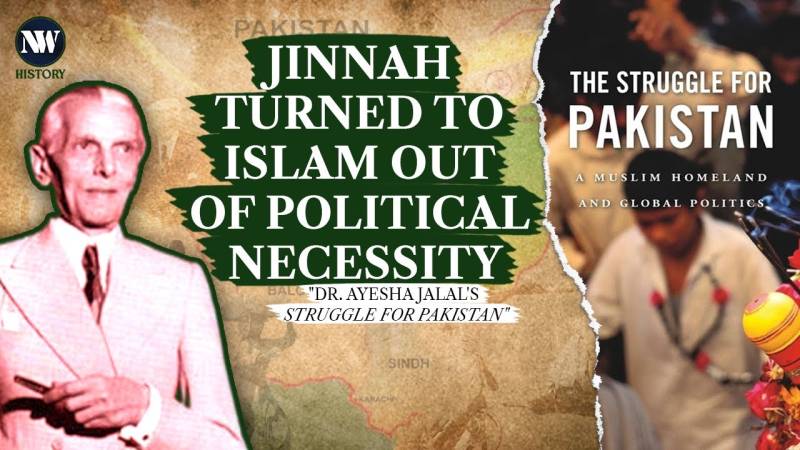The origins of the Pakistan schemes
Tracing the origin of the scheme to Iqbal, Dr. Jalal writes “Far from aspiring to hold the future government of independent India to ransom, Iqbal explained, Muslims in northwestern provinces simply wanted to live according to their own cultural traditions without fear of Hindu domination.
Muslims were ready to stake all for the freedom of India if the religious and cultural autonomy of all communities was made the basis of a permanent communal settlement. Iqbal was at pains to deny that such a Muslim state would promote religious obscurantism. Islam was not a church but a contractual state whose citizens were spiritual beings with rights and duties in society.
A Muslim state in India would permit innovations in Islam unbridled by “Arabian imperialism”. This would not only bring Muslims into closer contact with the original spirit of Islam but also make them more amenable to the spirit of modern times. Significantly though, as Dr Jalal points out, the scheme had ignored the Muslims living in Northeast i.e. Bengal and the Hindu majority provinces. Rahmat Ali departed from this idea in so far as he spoke of Muslims in those areas as well.
Dr Jalal says that it does not require much perspicacity to realize that Rahmat Ali’s Pakistan was the territorial embodiment of the nonterritorially based idea of Muslim ummah or community.
She points out that Ghulam Hussain Hidayatullah rubbished the notion in categorical terms, saying that for Sindh Muslims to give up their individuality to group with coreligionists in Punjab was nothing short of political suicide. Nevertheless in 1938 the Sindh Muslim League proposed dividing India into Muslim and non-Muslim states.
The invocation of religious identity by Sindhi Muslims was an expression of their regional aspirations rather than an affinity with coreligionists in neighboring provinces.
Even Iqbal and Rahmat Ali did not envisage a complete break with the rest of India and outright secession was not an option for the Muslims in the minority provinces. The notion of reciprocal safeguards could work only if Muslims and non-Muslims remained part of a larger Indian whole. This is the nub of the matter.
Ultimately the idea of Pakistan was not inconsistent with a confederal arrangement covering the whole of the subcontinent. “After 1940 there was no retracting of the League claim that Indian Muslims were a nation entitled to equal treatment with Hindus in all future negotiations. However the demand for a separate sovereign state was kept open for negotiation as late as the summer of 1946…
The reasons for ambivalences in the Lahore resolution can be comprehended only by underscoring the difference between a purely separatist demand and one angling for an equitable power-sharing arrangement at the subcontinental level between two disproportionate nations.
Looking to challenge Congress’s bid for power at the center based on the notion of monolithic sovereignty introduced by the British, Jinnah and the League came forward with a scheme that drew on the idea of shared sovereignty.
Such a conception of sovereignty was in line with the sub continent’s long history of creative power-sharing arrangements among its diverse peoples and regions.
Distinguishing between a “nation” and “state” and a partition of India as opposed to partition of the two main Muslim-majority provinces helps to unravel the contradictory dynamics underpinning the demand for a Pakistan.”
Was Pakistan to remain within India?
So what was the Pakistan Movement about? Dr. Jalal suggests “Jinnah wanted something close to parity with the Congress at the all India level because Muslims as a nation had a right to an equal share of power with the Hindus. If it was to cover Muslims in both the majority and minority provinces, Pakistan had to remain part of an India whole.
In keeping with that aim, Jinnah made it a point to always speak of Pakistan and Hindustan and not Pakistan and India.” Jinnah said “We are not the enemies of the Congress though we disagree on certain issues. If we must have a separate state that will not mean we shall have nothing to do with each other.
Both Hindus and Muslims will be happy when Pakistan is established as it was in their best interest. They would never allow anybody whether he is Afghan or Pathan to dominate us because India is for Indians.
Dr. Jalal continues “Much has been made of the transformation of this secular and westernized lawyer after 1940. Yet Jinnah’s recourse to Islam was the product of political necessity- the need to win support of a community that was a distinctive category in official and popular parlance but with no prior history of organizing on a single platform…
This is where recourse to Islam made sense to a politician and a party with neither a populist past nor a populist present. Both politician and party needed to steal the populist march on their rivals. It was his manipulation not of religion but of politics that enabled Jinnah to steer the course for the League… In the Spring of 1946 the Labor government decided to send out a cabinet delegation to determine how power was to be transferred to India.
After meetings with a cross-section of Indian leaders and opinion makers, the Cabinet Mission proposed a three-tier federal constitutional framework that came close to giving Jinnah what he both wanted and needed.
The groupings of provinces gave the League a virtual center which it could use to control the Muslim provinces prior to bringing their weight to bear at the all-India level.”Dr Jalal points out that this arrangement did not give parity to neither Muslims nor Muslim majority provinces and Jinnah still accepted it. Nehru declared on July 11 1946 that provincial grouping might not last, effectively negating Congress’ acceptance of the Cabinet Mission Plan.
In Dr. Jalal’s view, Jinnah’s idea of Pakistan was not predicated on partition of Punjab and Bengal and much less on a division of India. Jinnah had an idea of an India above Muslim provinces and Hindu provinces.
“On March 8, 1947, the Congress led by Nehru formally called for the partition of Punjab and indicated that a similar fate may await Bengal… Brushing aside Jinnah’s arguments that it was a grave error to equate the principle of Pakistan with the partition of Punjab and Bengal, Mountbatten accused Jinnah of megalomania bordering on lunacy.
Once the Congress had stated its price for agreeing to dominion status and staying in the Commonwealth- an early eviction of the League from the interim government and final settlement based on the creation of a “Pakistan” shorn of eastern Punjab and western Bengal- the Viceroy advanced the date for the transfer of power to August 1947…
In the end, instead of an equitable power sharing arrangement between the Muslim provinces and Hindustan, Jinnah was offered an unenviable choice- an undivided India with no assurance of the Muslim share of power at the center or a sovereign “Pakistan” devoid of the non-Muslim majority districts of Punjab and Bengal… The Congress High Command nipped the plan for a united and independent Bengal in the bud.”
In Dr. Jalal’s view, Jinnah’s idea of Pakistan was not predicated on partition of Punjab and Bengal and much less on a division of India. Jinnah had an idea of an India above Muslim provinces and Hindu provinces.
“The fundamental structural contradiction in the British Indian political system between all-India concerns and regional dynamics ultimately defeated Jinnah.” Most poignantly she adds: “A Pakistan without its non-Muslim minorities in Punjab and Bengal was in no position to negotiate safeguards for Muslims in the rest of India. Congress insisted on partition as a final settlement, arguing that the Muslim areas were to be seen as contracting out of the Union of India. This put an end to the Indian Muslim nation using the grant of independent statehood to its collective advantage.”
This also meant that should the Pakistan experiment have failed, its constituent units would have to return to India individually and “not re-create it on the basis of two sovereign states. Jinnah’s decision to become the governor general of the new state was intended to forestall such a development.”
Let us explore if religion was intended to be the primary ideology behind the creation of Pakistan.
“Religion is often thought to have been the main impetus behind the creation of Pakistan. The historical evidence militates against such certitude. The demand for Pakistan was intended to get an equitable, if not equal, share of power for Indian Muslims in an independent India. What instead emerged, to use the words of the founder of Pakistan was a truncated… moth-eaten and mutilated state.”
So, what was the role of religion in the new state's formation?
“It was mainly religion as identity, not the dream of an Islamic theocracy, which had spurred the AIML to demand the creation of Pakistan in March 1940. When in December 1943 Jinnah’s friend and associate, Nawab Bahadar Yar Jang, tried committing the Muslim League to a state based on Quranic principles, the Quaid-i-Azam demurred, noting that the representatives of the people would decide the future constitution of Pakistan… the main impediments to evolving a framework for a united India were not disputes over issues of religious doctrine but power-sharing arrangements between members of different religious communities at the all India level as well as in key regions like Punjab and Bengal…
Adopting the colonial state’s policy of privatizing religion, secular India undertook to guarantee the religiously informed cultural identities of its Muslim citizens, albeit one that was strictly limited to the precepts of sharia as defined by the ulema.”
This explains secular Congress’s paradoxical alliance with Islamist religious parties and possibly explains why those religious parties today champion secularism in India but oppose it in Pakistan. “The rank opportunism of the religio-political parties combined with their relentless criticism of the immoral lifestyles of its westernized ruling elites was one of the reason for the state (in Pakistan) keeping them at arm’s length.
Another was Jinnah’s explicit statement of intent on the role of religion in the new state. Speaking extempore, he told the first meeting of the constituent assembly on August 11, 1947 that if Pakistan wanted to count for something in the international comity of nations, it would have to rise above the angularities of sect and community. The speech stung the budding ideologues of the new state. Steps were taken at their behest to ensure that the governor-general, by now a dying man, was never allowed to speak again without a prepared script. An unrepentant Jinnah never retracted his position.”


